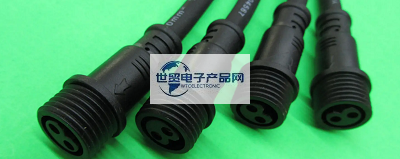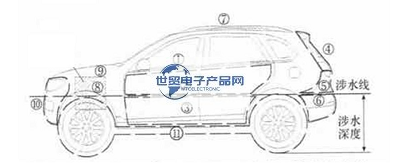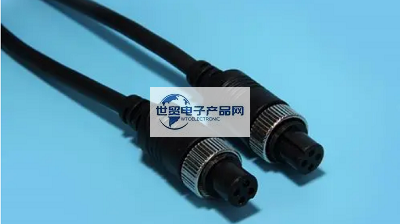Categorization:Product Information
The automobile low-voltage wiring harness is the nervous system of the automobile, which connects all the electrical equipment on the whole vehicle and plays the role of power distribution and signal transmission. In order to ensure the working stability of the wiring harness system, it is necessary to determine the corresponding protection design of the wiring harness in each area according to the working environment of each area of the whole vehicle. Waterproofing is an important part of wiring harness design.

-------------------------------------------------------------------------------------------------
1. Wading depth The maximum wading depth of a car refers to the height of the "wading line" from the ground, and the "wading line" refers to the horizontal level of the deepest water area that a car can pass through when driving at a speed of 10km/h. When designing the electrical system, it is necessary to refer to the wading depth of the whole vehicle, so that the key electrical components are arranged above the wading line, and the electrical components below the wading line can be effectively waterproof. According to the wading depth of the vehicle and the layout of the electrical components and wiring harness of the whole vehicle, the layout area of the wiring harness of the whole vehicle is divided as shown in Figure 1 below.

1. Cab and passenger compartment; 2.4 Above the wading line of the gate line; 3.4 The following parts of the wading line; 4. Back door; 5. The part above the wading line of the rear bumper; 6. The part below the wading line of the rear bumper; 7. ceiling; 8. Nacelle frame beam; 9. The frame beam/engine peripheral part in the nacelle; 10. Front bumper; 11. Chassis and 4 wheels. 2. Wet and dry areas and areas below the wading line of waterproof areas are called wetlands. The wiring harnesses located in this section include: front bar guard harness, engine room harness (engine room side), power cords (e.g. engine harness), rear bar guard harness, battery positive and negative harnesses, door wires (below the wading line), and all high voltage wiring harnesses. The connectors on these harnesses (except door wires) are required to be waterproof, and the perforated parts indoors need to be sealed with rubber parts to prevent water from entering the cab. In addition, penetration points on the harness must be protected with heat shrink tubing and all ground points must be protected with adhesive heat shrink tubing. For the door harness, the insert below the waterline has only one low voltage speaker, and it is recommended that the insert here be waterproof. The other portion other than the dehumidification zone is the drying zone. Harnesses located in this area include instrument harnesses, ceiling harnesses, left floor harnesses, and right floor harnesses. These wiring harness inserts do not need to be waterproof, but for the parts that are in direct contact with the outdoor, they need to be buckled with sealing ties, and the through holes are sealed with rubber parts to avoid indoor water ingress. 3. Waterproof form of wiring harness Waterproofing of wiring harness is mainly considered from the following aspects: (1) The drip point should be set on the vehicle layout. (2) Selection of cable ties. When the wiring harness is fixed on the body sheet metal directly connected to the outside world, priority should be given to not making holes in the body, and the stud bolts of the body should be used as much as possible to fix it. If it is really limited by other things, it should be secured with waterproof cable ties. (3) The use of waterproof plug-ins requires that waterproof connectors must be selected in waterproof designed areas, and appropriate connectors must be selected according to the waterproof grade of each area. At present, some domestic OEMs have vague regulations on the waterproof structure of waterproof joints, such as sealing plug and blind plug, but there is no regulation on their setting. However, due to the price of sealing plugs and blind plugs matching connectors, wiring harness suppliers will use other models instead, but these may make the waterproof design unreliable and affect the functional use of the electrical components of the whole vehicle. Therefore, it is necessary to supervise the corresponding waterproofing experiments and participate in the whole process to ensure the stability of the system. (4) Waterproof at the crimp between the penetration point and the terminal For the wiring harness in the wet area, the penetration point between the wires should be protected by heat shrink tubing, and all grounding points in the wet area should be protected by heat shrink tubing with glue. (5) Appropriate rubber parts should be used for waterproof and sealing protection of waterproof via wiring harness through holes. Considering the air tightness requirements of the whole vehicle, it is recommended that the interference amount be 1 ~ 2mm. For holes larger than 40mm, flanging design should be carried out to ensure air tightness.

---------------------------------------------------------------------------------------------------------------------------------------------------------------------------------------------------------------------------------------------------------------------------------------------------------- If you have related [connector wiring harness and cable products] purchasing/purchasing needs or want to purchase/understand which connector wiring harness and cable product solutions we can provide, please contact our business staff below; If you have related [Connector Wiring Harness Cable Products] sales/resources and promotion needs, please click "→ Business Cooperation ←" to negotiate with a dedicated person!